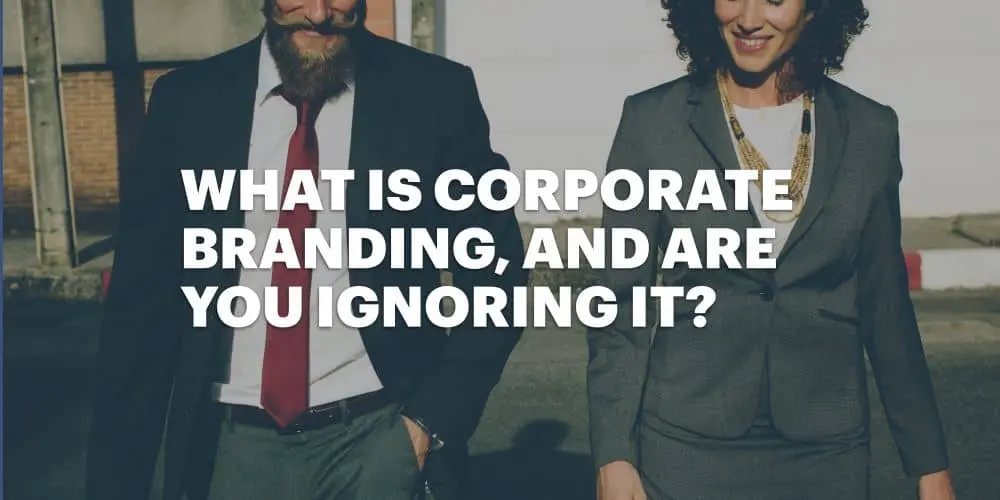Put simply, the difference between corporate branding and product branding is that corporate branding represents an entire company and its complete portfolio of products, while product branding focuses on a single product. Orville Redenbacher’s popcorn is a product brand. ConAgra Foods is a corporate brand.
Related: What is branding, and why is branding important?
Let’s take a quick step back to a recent blog where we defined what branding is: a brand is the sum total of the impressions of all interactions that your customer has with you. If it’s product branding, it’s all the interactions with your product—the packaging, commercials, quality, and so on. If it’s corporate branding or corporate identity it’s all the interactions they have with your company.
How visible is your corporation?
Depending on your company, the corporation may be virtually unknown—everyone knows about Twinkies, but few have ever heard that they’re owned by Flowers Foods. On the other hand, your corporate brand may be front and center for your consumers.
For example, Procter & Gamble was an official sponsor of the Rio Olympics. Their individual products were mentioned, but the focus of their ad campaign focused on P&G as a whole, continuing the mom-oriented messaging they’ve used in recent Olympic games. The campaign focuses on the strength that moms pass onto their kids, and how P&G is an ally in that goal. They cite several of their products: Tide detergent, Bounty paper towels, Pampers diapers, and more. But those products are seen very briefly; this is about corporate branding, and it’s the P&G logo that is displayed proudly at the end of the commercial.
When corporate branding replaces product branding
Of course, Procter & Gamble doesn’t usually advertise the company as a whole (because their products are so many and so varied—from Dolce & Gabbana perfume to Pepto-Bismol to Febreze—that it’s hard to lump them together and promote them as a block), but other multi-brand companies choose to brand the company instead of the individual products. GE is a good example: they sell microwaves and ovens, but they also make MRI machines, wind turbines, light bulbs and mining equipment.
So, when GE advertises, they’ve made a decision to promote the entire company. A new ad campaign titled “What’s the Matter with Owen?” is a self-deprecating series in which a young college grad gets hired by GE and, instead of congratulations, he gets sympathy from his uninformed friends. He has to explain to them (and to us, the viewers) that GE is a great company for developers like him. They’re a “digital industrial” company.
When your product portfolio needs to be split up
Recently on this blog, we talked about Disney’s brand message: “Magical Family Fun.” It’s a message that defines its theme parks, movies, stores and merchandising. But The Walt Disney Company consists of much more than just magical family fun. They own other family fun brands like Lucasfilm and Marvel, the ABC Television Group (with channels like A&E, the History Channel and Lifetime), and ESPN with its many spin-off channels.
In this case, all of these disparate brands under The Walt Disney Company’s umbrella don’t get into corporate branding the same way that consumer-packaged goods conglomerates like Procter & Gamble do. They occasionally work together (ABC collaborates with ESPN during March Madness, for example), but ESPN never raises the Disney flag.
Your corporation has a brand whether you manage it or not
But here’s the thing about branding: you have a corporate brand, whether you are managing it or not. Your company’s products do not exist in a vacuum. Disney has suffered lawsuits and boycotts against one subsidiary because of the actions of another.
The Southern Baptist Convention voted to boycott Disney’s theme parks and movies because ABC was airing Ellen, the show in which Ellen DeGeneres came out as lesbian. The Catholic League called for a boycott of Disney when Miramax (a movie studio owned by The Walt Disney Company until 2010) released Dogma, a movie where God is played by Alanis Morissette. Because Disney owned all of these things, people chose to boycott more than just the properties which offended them.
When brands clash
A similar thing happened with the large brand conglomerate Unilever: Dove soap began the “Dove Campaign for Real Beauty,” a marketing campaign which focused on non-Photoshopped models and women who were comfortable in their own skin. It was, and is, a beloved campaign for Dove beauty products, but it was cited as hypocritical by some who realized that Unilever also owned the Axe brand—a brand that, according to protesters, objectified women. (Ads for Axe showed airbrushed models unable to resist men who had used the body spray.)
Protesters added that, if Unilever would show gratuitously sexual ads, then the “Dove Campaign for Real Beauty” is not a true value of the brand or the leadership at Unilever, but a simple marketing ploy.
Key takeaway
Not every conglomerate has to behave like Procter & Gamble, advertising its products together as a group with a single focus. Nor does a company need to be like GE, uniting all of its products under the same brand. But whenever you are interacting with your customers, you are sending a message. Corporate branding is happening whether it’s directed by the company or not.




